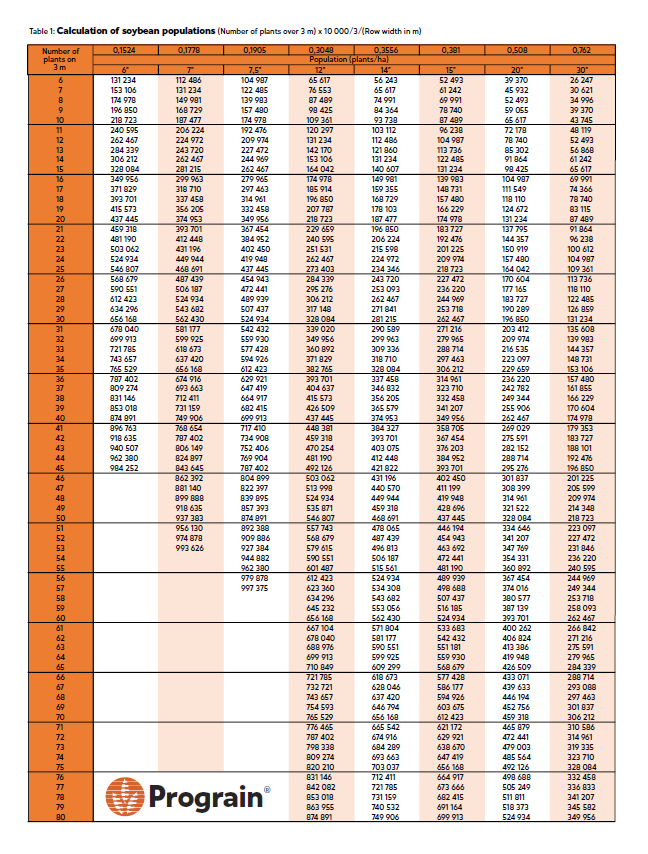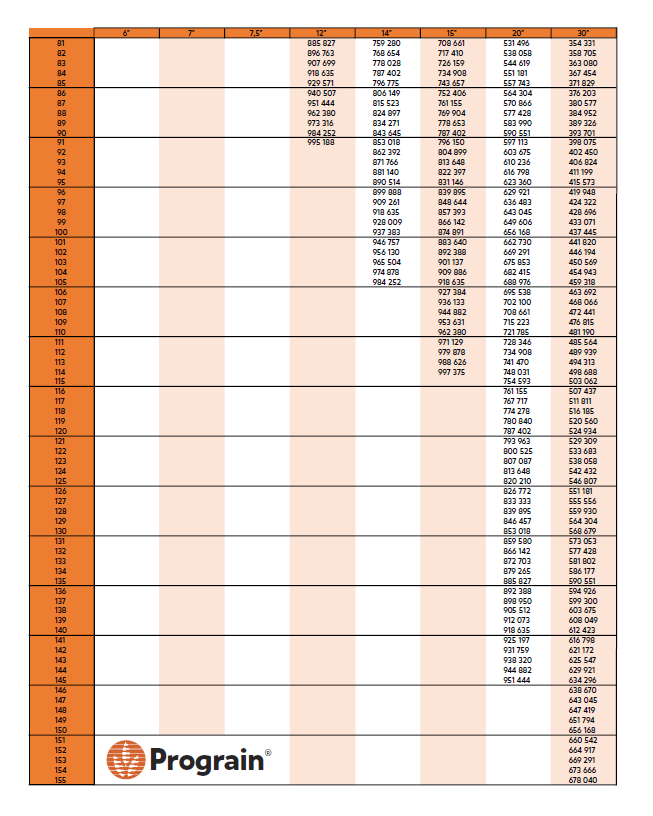For most growers, this year’s seeding is done. Now it is time to assess the number of soybeans that have emerged in the fields.These early weeks are the perfect time for growers to accurately examine the density and health of their soybean stand. This exercise provides a short window to reseed if necessary.
By the numbers
Good emergence is measured as a minimum of 85 % of the sown seeds; or a total of 250,000 (absolute minimum) to 450,000 plants per hectare (100,000 to 182,000 plants/acre).
Methods of assessing your stand
The Hula Hoop and Row Length methodsare both good tools, easy to use, effective and quick, to determine a stand’s population density.
The Hula Hoop method
- You will need a hoop similar to a Hula Hoop.
- Throw the hoop out at random in at least 5 different zones in your field; make sure to include areas where seeds may not have emerged well.
- Count the plants in each zone, calculate the average, then multiply by the appropriate number.
This table provides multiplication factors for various hoop diameters to help calculate your emerged population per acre.

For example, if a hoop has a diameter of 21 inches, multiply the number of plants by 18 119 to determine the number of plants per acre.
The Row Length method
This method yields the emerged population per acre simply from counting linear plants in a 3 m section of row:

Take Note
If a soybean population is low, the plants will branch out as they grow and may fill in the area where the void was left by the missing plants. Branching type soybean varieties plants can cover up to 30 cm (12 inches) in and between rows.
Conversely, if there is too much space between plants, the stems will continue to branch out and may buckle (lodging). Also, pods can grow low to the ground, resulting in harvest losses. Plant lodging can be expected when a population density falls below 60 %.
Should you replant?
Soybeans expend more energy to germinate than corn or wheat does. In order to emerge from the ground, the young seedlings must literally pull the cotyledons to the surface.
Depending on the soil conditions after seeding, the effort required can be demanding. For a precise assessment of your stand, calculate the emergence of your soybean plants in multiple spots in the field, using the above methods.
Causes of poor plant stands
- Some fungal diseases cause seed rot (Pythium, Phytophthora, etc.);
- Damage caused by insect pests like the seedcorn maggot;
- Poor soil conditions;
- Incorrectly adjusted seeding equipment (seeds too shallow or too deep);
- Damage caused by phytotoxicity (herbicide or fertilizer);
- Weather conditions (crusting when it is too dry, etc).
So, to make an informed decision, you must:
- Determine whether the population is below 100,000 plants per acre;
- Identify and correct the cause of poor stand establishment;
- Calculate whether the expected yield will exceed the replanting costs.
If you have more questions, our team will be delighted to answer them.
You can also use this document for more information:


